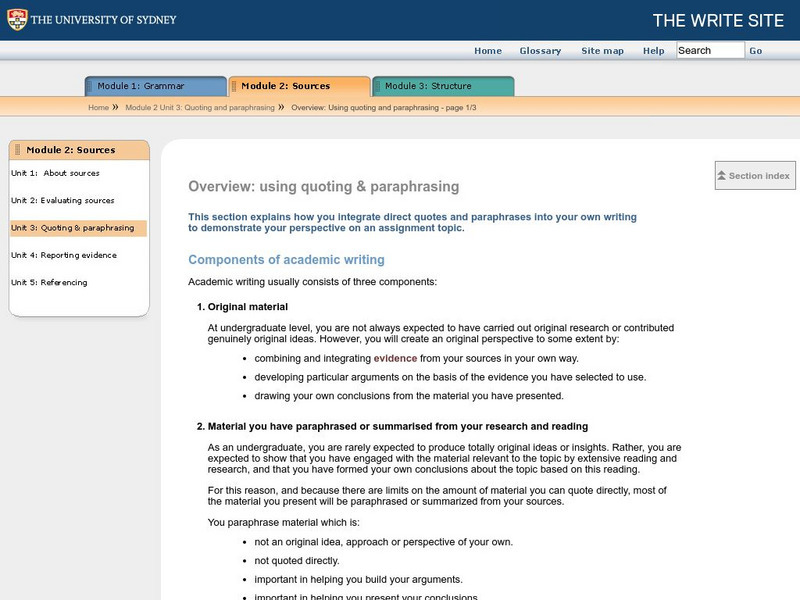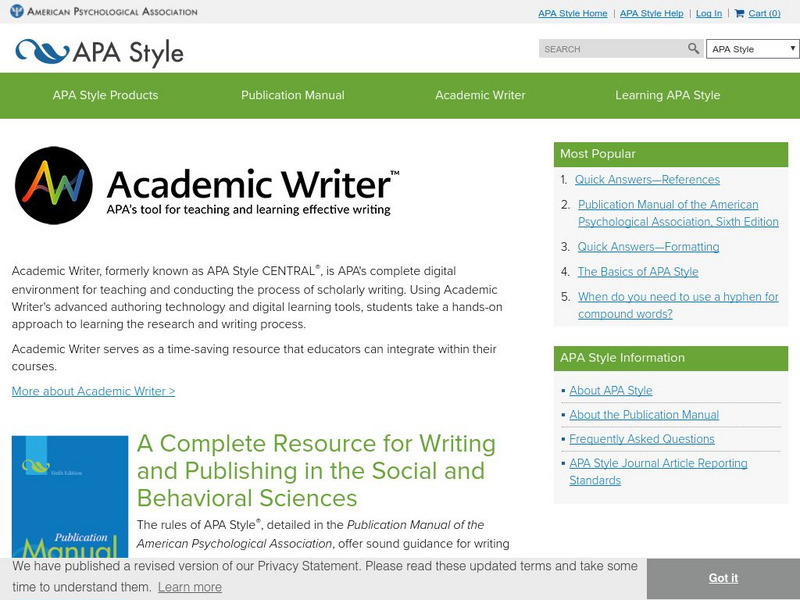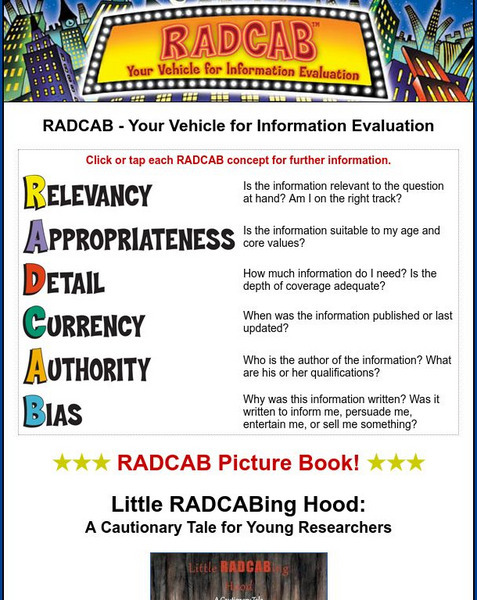Hi, what do you want to do?
Online Writing Lab at Purdue University
Purdue University Owl: Quoting, Paraphrasing, and Summarizing
Provides guidance on the ways to quote, paraphrase, and summarize information. Gives various reasons for paraphrasing, summarizing, and quoting various sources.
ReadWriteThink
Read Write Think: Exploring Plagiarism, Copyright, and Paraphrasing
Contains plans for three lessons that deal with plagiarism, copyright law, and how to paraphrase correctly. In addition to objectives and standards, this instructional plan contains links to PDF handouts and sites used in the lessons as...
TES Global
Tes: Determining of Credibility of Online Sources
[Free Registration/Login Required] This free resource is a sheet that will help students assess the credibility of an online primary source or an online secondary source.
Sophia Learning
Sophia: How to Choose Credible Sources
This tutorial focuses on choosing credible sources for a research project. It offers two versions of a slideshow: a non-audio slideshow and an audio slideshow which explains the information as it is shown. They each define terms, offer...
Cambridge Rindge & Latin School
Cambridge Rindge & Latin School: Making Source Cards
A great resource for putting together all of a student's possible sources onto note cards for later using in citing.
Online Writing Lab at Purdue University
Purdue University Owl: Types of Sources
A list and explanation of different types of print and online sources. W.11-12.8 Sources/Integrate/Cite
University of Toronto (Canada)
University of Toronto: Standard Documentation Formats
Documenting Internet resources is becoming standardized. You'll find some of the basics here, plus links to more detailed guidelines now included in respected academic style guides. L.9-10.3a Standard Format, W.11-12.6 Technology,...
Other
Plagiarism: Teaching About Plagiarism
The best way to prevent plagiarism is to educate students on how to properly conduct research, cite, quote, and produce unique and original work. This site offers a series of video explaining plagiarism and ways to avoid it.
University of Sydney (Australia)
The Write Site: Overview: Using Quoting & Paraphrasing
This learning module explains the components of academic writing. The module includes the following topics: original material, paraphrased content, summarized information, and direct quotations.
Indiana University
Indiana University: Plagiarism
Uses examples to explain the right and wrong way to use reference material. Shows how a rewrite can still be plagiarism. Briefly discusses common knowledge and paraphrasing.
Wisc-Online
Wisc Online: Identifying Acceptable Paraphrases
This learning module defines paraphrasing and discusses how to paraphase, and then they identify acceptable paraphrases of source material.
Library of Congress
Loc: How to Cite Digitized Primary Sources
Learn from the Library of Congress how to correctly cite the many electronic resources available in their collection. Films, legal documents, photographs, maps, sound recordings and other unusual cases are covered. Be sure you click on...
Other
Apa Style Central
Use this comprehensive resource to learn about APA style. Students and teachers can use this site as a springboard for any questions they may have concerning APA Style.
Better Lesson
Better Lesson: Avoiding Plagiarism and Citing Sources
In this scaffolded lesson, students engage in practice with determining whether or not research has been plagiarized. A short video demonstration is included. [03:44] This lesson addresses all three College and Career Readiness Standards...
Better Lesson
Better Lesson: What Is Plagiarism?
In this activity, learners write summaries of researched information in their own words and quote text accurately.
University of Wisconsin
University of Wisconsin: Writing Center: Mla Documentation
This site outlines the basics of the MLA (Modern Language Association) style of documentation and includes links to handouts about in-text citations, the works cited page, and how to cite electronic sources. Several sample citations and...
University of Wisconsin
University of Wisconsin: Writing Center: Apa Documentation
This site provides information on the APA (American Psychological Association) documentation style. The information can be downloaded in PDF format. It refers to several handouts dealing with parenthetical references, reference lists,...
Other
Radcab: Your Vehicle for Information Evaluation
How do you know you are using a trustworthy source when writing a research paper? Use this acronym for easy questions to ask yourself to make sure you have a reliable source. Click on each one for further details.
Other
How to Compile a Bibliography
This site provides basic guidelines and examples for how to compile a bibliography. Grade levels listed 1st through 6th.
Online Writing Lab at Purdue University
Purdue University Owl: Writing a Research Paper
This resource provides many links to information on writing research papers.
Alabama Learning Exchange
Alex: English Mentor: How to Write a Career Research Paper
This structural design will guide students in writing a career research paper from start to finish. They will gather information; cite sources MLA style; develop a thesis statement, outline, and paragraphs; and create a research paper...
Alabama Learning Exchange
Alex: How to Cite Online Resources
After research in the Alabama Virtual Library, learners will write a paragraph essay and use an online citation utility to create bibliographic citations for an online encyclopedia, an online magazine, and a print resource. Copying and...
Other
Power Up What Works: Conducting Research
This resource describes the first phase of a Grade 6 teacher's instructional activity where students develop a plan for working on a research project and then collect information. Each student has chosen a topic relating to how the...
Other
Library Spot/style Guides
This general page provides links to MLA Style, Elements of Style and Online Citation Styles. Also has reference desk and links to libraries.




























